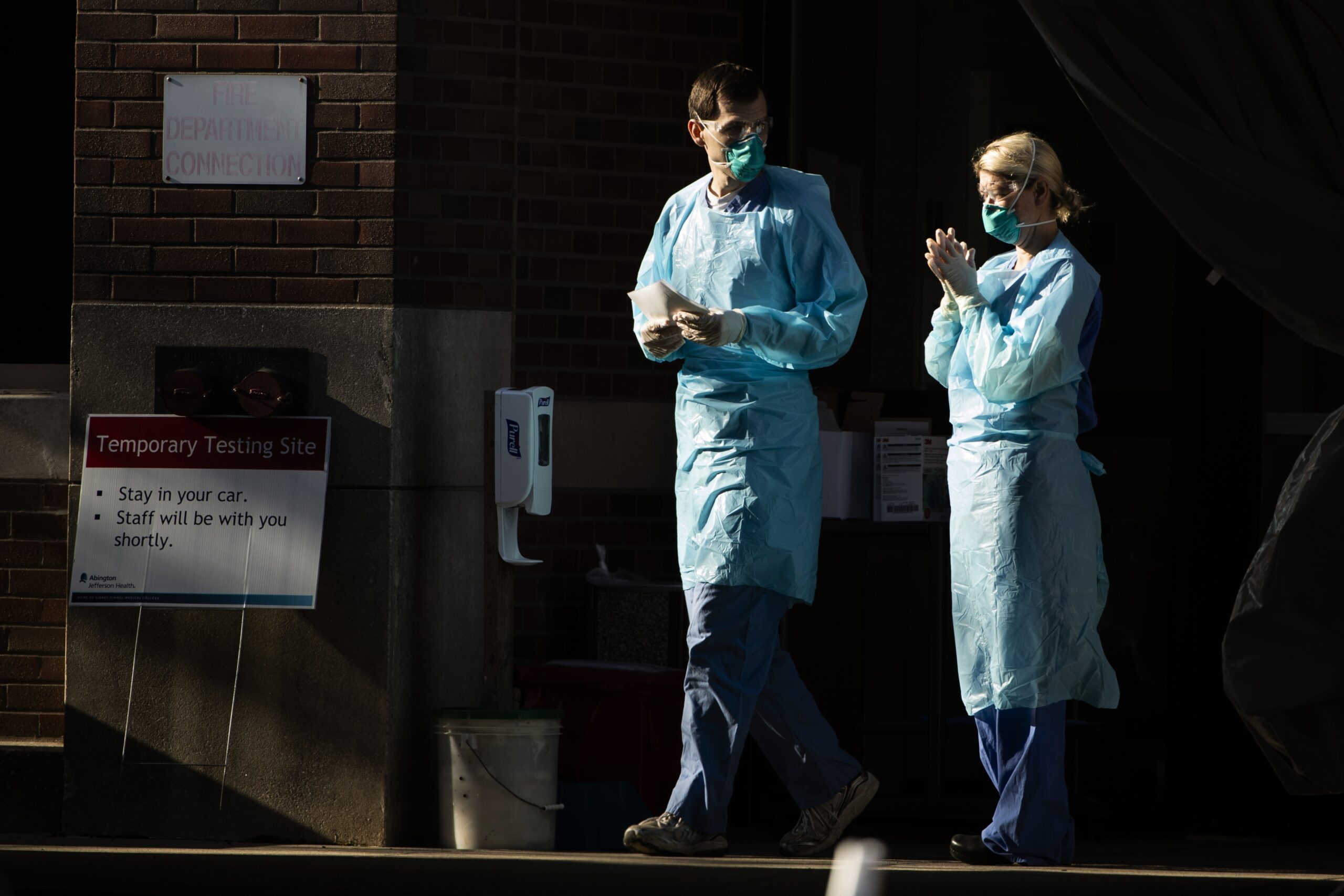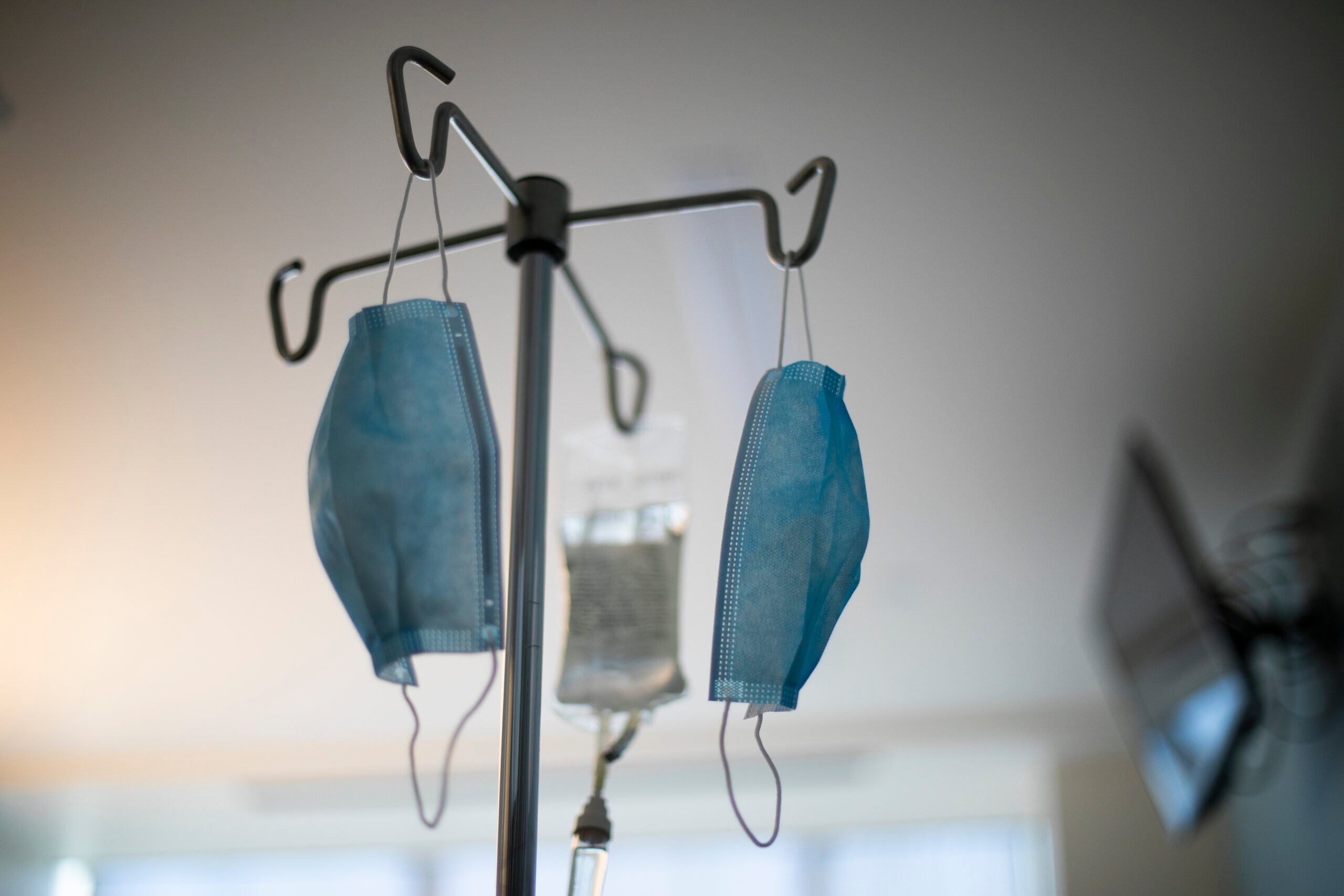Hospitals around the country are preparing for a possible surge in COVID-19 patients by increasing the bed capacity at their facilities. Part of that effect means freeing up the beds that already exist, which is why many hospitals are postponing elective surgeries and procedures.
Still, data from the Harvard Global Health Institute shows even hospitals in larger cities like Milwaukee, Madison and Green Bay could quickly run out of beds if a surge in patients isn’t spread out over time. And a Kaiser Health News analysis of hospital cost reports suggests there are dozens of counties in the state that do not have a single intensive care unit bed. Those ICU beds will be critical for patients who develop severe respiratory complications from COVID-19.
A 2018 survey by the Wisconsin Hospital Association of 152 hospitals shows a total of 12,449 hospital beds with an average occupancy rate of 58.3 percent. About 11,000 of those beds are in “general medical-surgical” hospitals, as opposed to more specialized hospitals like psychiatric, rehabilitation, or drug abuse facilities.
Stay informed on the latest news
Sign up for WPR’s email newsletter.
Dr. Mark Kaufman, chief medical officer of the Wisconsin Hospital Association, said the efforts hospitals are taking to limit elective procedures and shifting patient visits online should increase the number of beds available, “should there be a surge of patients needing hospitalization with COVID-19.”
The number of ICU beds in the state are harder to determine. Andrea Palm, secretary of the Wisconsin Department of Health Services said on a press call Friday afternoon that there are currently “about 2,500 ICU beds in the state of Wisconsin.” Palm added that hospitals are “very actively” looking to see how they can convert other beds in the hospital to be used as an ICU bed.
Palm also noted a difference between health care resources in rural areas compared to urban ones.
“What is needed in rural communities is not exactly the same. They don’t have the same assets as what we do in urban and suburban communities,” Palm said, adding it was a “critical” part of the state’s response.
On Friday morning, WPR reached out to 10 health care systems around the state to inquire about the number of total beds and ICU beds available at their facilities as well as any efforts those hospitals are taking to increase their capacity. Most did not respond. Many hospital media representatives describe being overwhelmed with press inquiries during a rapidly changing health care emergency.
As Chris Stauffer of Gundersen Health explained in an email, “I will do my best to answer these questions, but keep in mind what I share today will change tomorrow.”
Stauffer said Gunderson “technically” has 325 beds in La Crosse, but noted more beds and bed availability were being added. “In a pandemic, bed availability is situational,” Stauffer said, noting for example that beds that would typically be used for post-operative procedures are now available.
UW Health chief quality officer Dr. Jeff Pothof said the system typically has around 500 patient care beds split between University Hospital and American Family Children’s Hospital in Madison.
Pothof said they are looking at ways of repurposing spaces. Areas typically used for outpatient visits, for example, could be converted and used for providing inpatient care. Pothof said finding available space is only the first step to increasing UW Health’s capacity. They also need to source supplies like medical gases, and even the additional beds themselves.
“All those things need to come together,” Pothof says.
Also in Madison, William S. Middleton Memorial Veterans Hospital director John Rohrer said they have 131 hospital beds locally, “but for us it’s more a regional question.”
Rohrer said the network the Madison VA is a part of, which includes eight hospitals and 40 clinics around the Great Lakes region has a capacity of 2,000. Rohrer said they’re reducing traffic into the hospital and taking non-urgent cases out of the hospital to increase the number of available beds “if and when we need them for any kind of influx.”
In a statement, Dr. Mark Cockley, chief clinical officer of ThedaCare, which serves northeast Wisconsin said there are “multiple efforts underway” to prepare for a potential surge, “including staging and repurposing rooms to provide virus-related treatment and setting up temporary structures at our hospitals.”
An Ascension Wisconsin spokesperson highlighted the health systems efforts “postponing non-urgent procedures and medical visits.”
And Dr. Mark Kaufman points to more dramatic efforts in states like California, where vacant hospitals are being brought back online in order to increase the state’s hospital bed capacity, as a possibility in Wisconsin.
“We have a number of hospitals in Wisconsin that are relatively new, and their previous structures are still standing,” Kaufman said.
Kaufman stressed social distancing as “the one thing all non-medical people can and need to do” to help prevent hospitals from becoming over burdened, adding, “it can have a huge impact.”
“COVID-19 is coming more significantly to Wisconsin,” Kaufman said. But how quickly and how intensely will make a difference for hospitals.
Wisconsin Public Radio, © Copyright 2024, Board of Regents of the University of Wisconsin System and Wisconsin Educational Communications Board.





